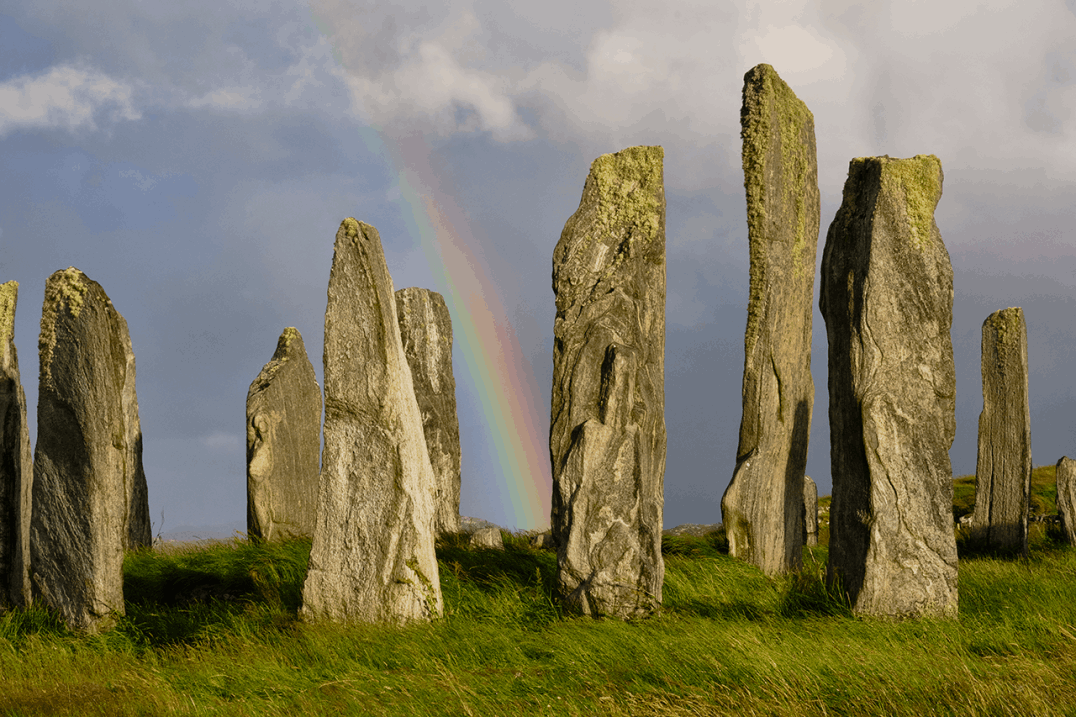
The central stone circle of Callanish I
(Photo: Callanish Digital Designs)
Callanish I
Callanish I (in English) or Calanais I (in Scottish Gaelic) on the Isle of Lewis is one of the oldest, and largest, megalithic sites in the UK.
Callanish I is an unusual megalith setting formed of a central stone circle and tall central stone with 5 radiating rows of stones forming a cruciform-like shape. There is also a chambered cairn inset into the stone circle between the ring and the centre stone.
Callanish I is part of a much larger, connected megalithic landscape with at least 18 other stone circles, standing stones and cairns being considered part of this loose grouping.
